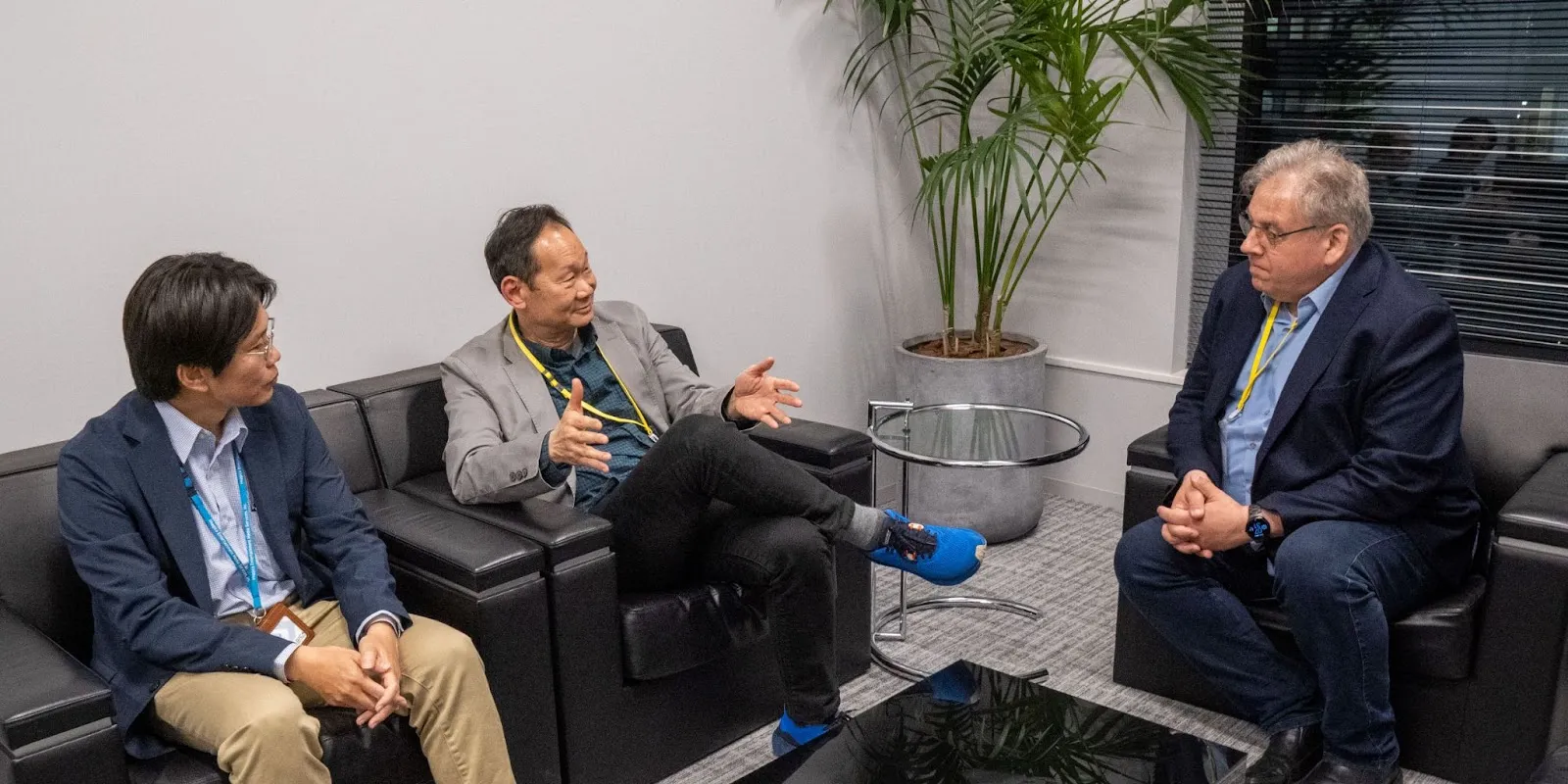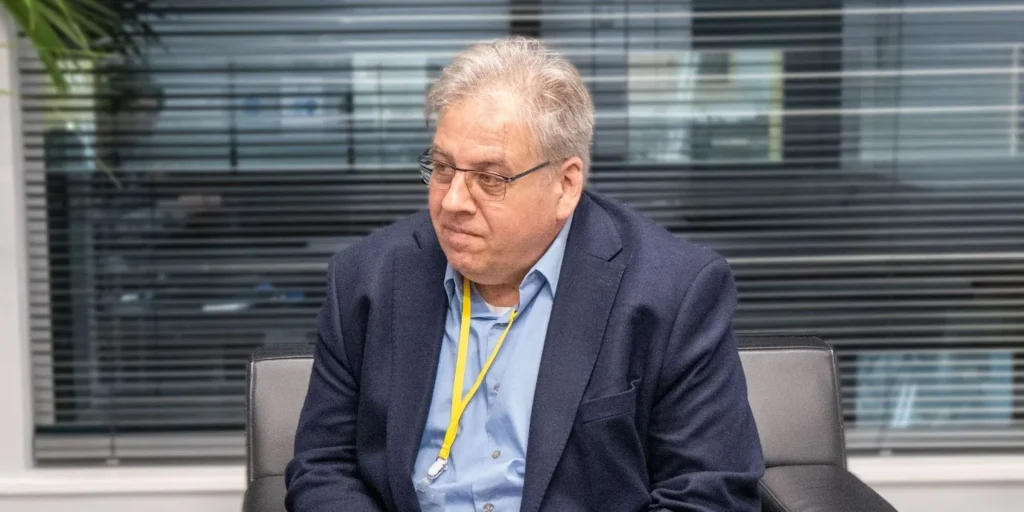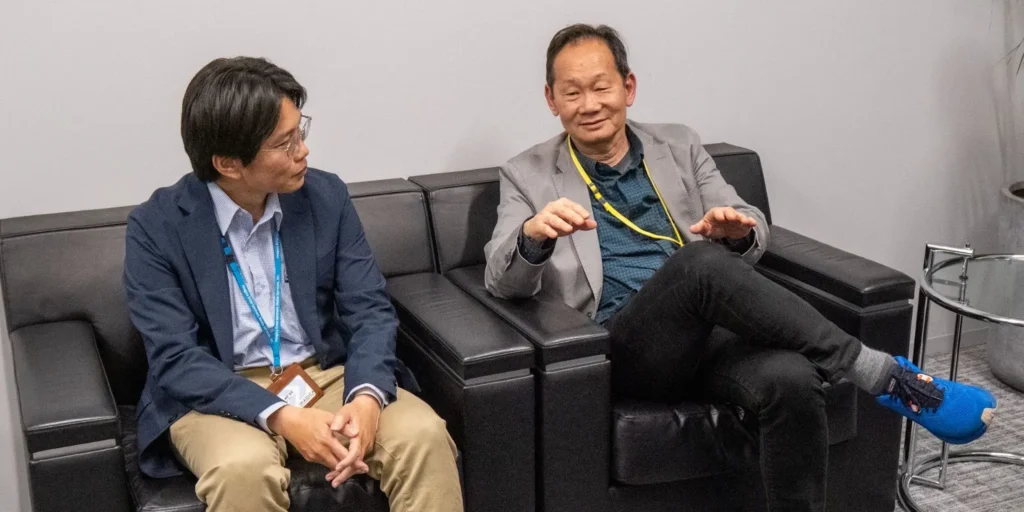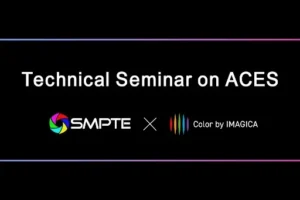The Power of Standardization Connecting the World: SMPTE and Imagica EMS Discuss the Future of Media & Entertainment Technology

In the rapidly globalizing media and entertainment industry, "technological harmony and interoperability" are indispensable at every stage, from content creation to distribution. The Society of Motion Picture and Television Engineers (SMPTE) plays a crucial role in this.
SMPTE's Raymond Yeung and Thomas Bause Mason visited Japan for SMPTE's Technology Committee (TC) Meetings, held in the country for the first time in six years. They talked with Aki Seino, Senior Technical Director overseeing the technology division at Imagica Entertainment Media Services (Imagica EMS). This discussion delves into the importance of SMPTE's global activities, its latest initiatives, and the role Imagica EMS plays within them.
Panelists:
Raymond Yeung (SMPTE, Standards Vice President / Amazon MGM Studios, Head of Content Standards)
Thomas Bause Mason (SMPTE, Director of Standards Development)
Aki Seino (Imagica Entertainment Media Services, Senior Technical Director)
SMPTE's Expanding Circle of Standardization Around the World
Aki:Thank you for joining today. The TC meetings are being held in Japan for the first time in six years. How do you find Japan after all this time?
Thomas:Imagica also hosted the TC meetings six years ago, but it was in Gotanda, not here. I remember how friendly everyone was. This time, the location is great, and the meetings are progressing well, so we're very grateful.
Aki: I'm honored to hear that. First, could you tell us about SMPTE's mission?
Thomas:SMPTE truly has a global mission. We prioritize "technological harmony and interoperability" above all else. To achieve this, we need to look beyond North America to Europe, Asia, Oceania, Australia, and New Zealand. In essence, we aim to be a forum for discussion on media and entertainment technology worldwide. To that end, we're expanding our activities to South America, Africa, and the Middle East, and we recently held an event in Saudi Arabia. Conducting global outreach and inviting people into SMPTE for international discussions is incredibly important to us because we develop internationally recognized standards.
Raymond:In Japan, thankfully, there are many supportive companies and participants who agree with SMPTE's activities. Although we do not have as a Japanese Section, I believe we maintain excellent ongoing communication with companies like Imagica EMS and NHK, and specific individuals.
Thomas:We understand the needs of each country, and even if the harmony isn't possible, we believe we can create standards that accommodate all different requirements.

The Forefront of Media and Entertainment Technology
Aki:What were some of the themes of this TC meeting?
Thomas:Firstly, digital cinema remains an important topic. A lot of revision work is underway, and publishing is expanding. We're also working on IMF (Interoperable Master Format) maintenance. We are discussing ST 2110 for IP transmission of media, IMF for Digital Cinema, and more.A significant new topic is HDR color mapping in broadcast workflow. Firstly, the Common LUT Format will have a broadcast profile proposed by the EBU. Then a single HDR source workflow will include the SMPTE ST 2094 dynamic metadata with the surprising application in browser and desktop rendering.
Aki: I was surprised to hear that the SMPTE ST 2094 dynamic metadata for HDR color transform has been adopted by browser manufacturers.
Thomas:Yes, we were also surprised that companies not typically active in SMPTE, such as Microsoft Edge, Google Chrome, and Apple, supported this initiative.
Aki:What about your initiatives regarding AI, which has been gaining a lot of attention recently?
Thomas: AI is definitely a strong focus for the future. We have an AI task force, and we've currently launched three projects within SMPTE. Specifically, these are projects concerning AI metadata and LLM (Large Language Model), and initiatives related to embeddings to support content search.
Raymond:These efforts will make AI-driven content creation easier.
Thomas:Furthermore, we're working on C2PA (Content Authenticity Initiative), which ensures the provenance and reliability of content. We're planning to launch a study group on this topic soon, and we'd love for people in Japan to participate.
Aki:We'll definitely consider it. With the growing problem of fake content, content reliability is a crucial topic.
Thomas: Exactly. I think it's a very important theme as AI continues to evolve. In addition to these, we're tackling various other topics like Media in the Cloud, Sustainability.
Aki:You're really working on a vast number of topics, truly a "forum for discussion on media and entertainment technology worldwide."
From Unique Japanese Requirements to International Standards
Thomas:Imagica EMS plays a very important role in SMPTE's global activities. As a leading post-production company in Japan, you bring a lot of information about the Japanese market to SMPTE, which is very helpful as we advance international standardization.
Aki:Thank you. We also believe that SMPTE's standardization is very important. One reason is when unique Japanese requirements are necessary. For example, we're currently working on the SMPTE EG 428-23: Mastering Guideline for Japanese Timed Text DCDMs project. One reason for this is that existing standards might be partially usable but aren't perfect, especially for Japanese subtitles, so I'm working towards international standardization with Imagica EMS specialists. Another reason is to catch up on new topics. Much of Japanese technology tends to follow the U.S., but we want to not only catch up but also collaborate in creation. As globalization accelerates and content crosses borders to be enjoyed by many viewers, we feel it's necessary to always be up-to-date with the latest topics.
Thomas:Speaking of hot topics, ACES (Academy Color Encoding System) is getting a lot of attention in Japan right now. SMPTE and Imagica EMS co-hosted a technical seminar on ACES, and we were surprised by how many people attended. We expected a full house for ST 2110 or AI, but the number of attendees was comparable.
Aki:Yes, we received a lot of feedback after the seminar and felt it was very well received. It's a highly anticipated topic, so we'll continue to work on it to ensure we can fully support actual projects.

Raymond:ACES is a big topic in produced media as well. We get a lot of questions about ACES at the studios.
Thomas:ACES has enormous potential due to its independence from dynamic range and its integrated HDR. I once suggested to a major media and entertainment company, when discussing HDR broadcasting, "Why don't you fully transition to ACES's 16-bit half-floating linear color space for streaming?" At the time, it seemed like a wild idea, but now it's becoming a reality.
Aki:So, what wasn't possible before is now becoming possible. We receive various technical consultations from our clients, so we feel it's necessary to always be up-to-date with the latest information and be able to respond. I've recognized that SMPTE is a crucial entity driving global standards in media and entertainment technology again, and its efforts in standardizing cutting-edge topics like ACES and AI are indispensable for shaping the future of the industry. We'd like to participate in discussions even more going forward.
Thomas:We certainly encourage it. Through this discussion and the TC meetings, we've also realized that there are unique needs in the Japanese market again, and we feel that Imagica EMS's technology and experience are necessary to advance SMPTE's global standardization activities in Japan.
Raymond:The evolution of technology cannot be stopped. That's why we need to collaborate and build the standards of the future. I hope this discussion marks a new step in that direction.


